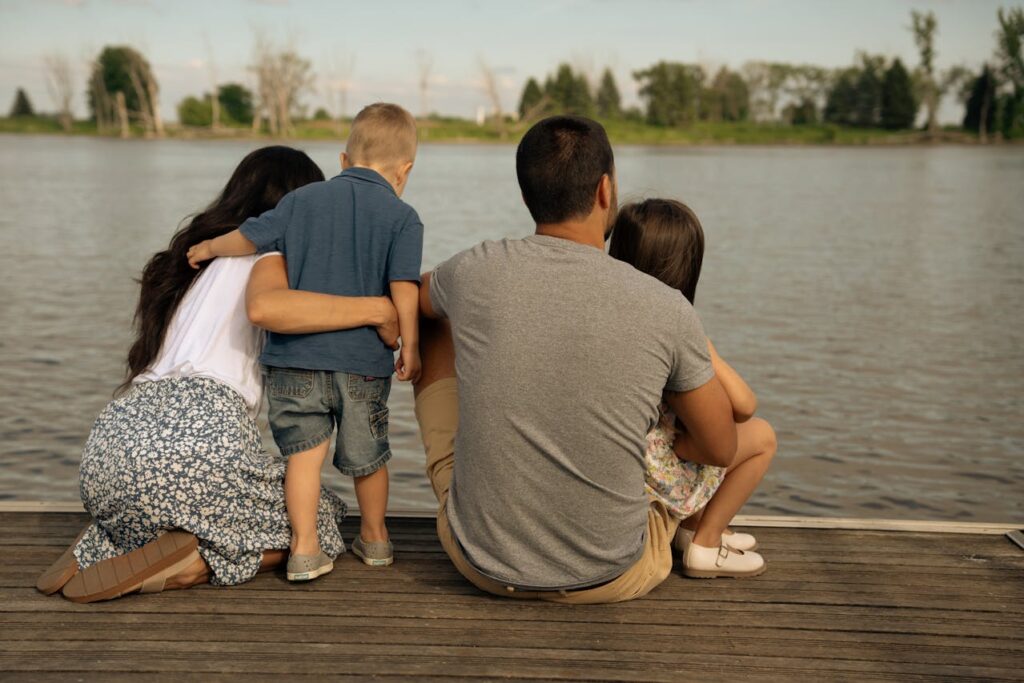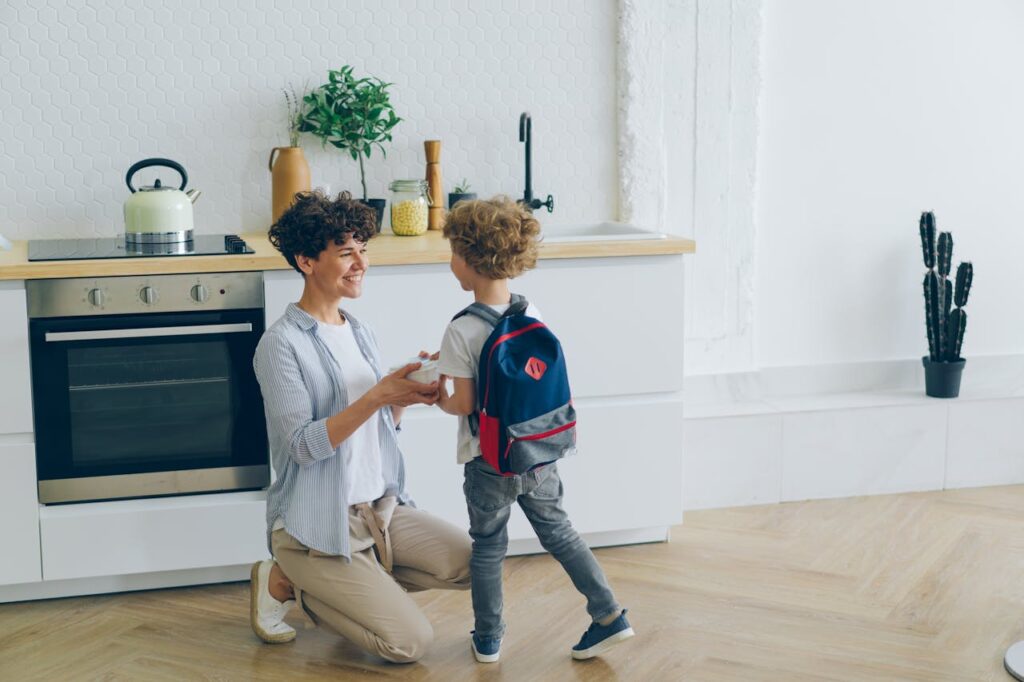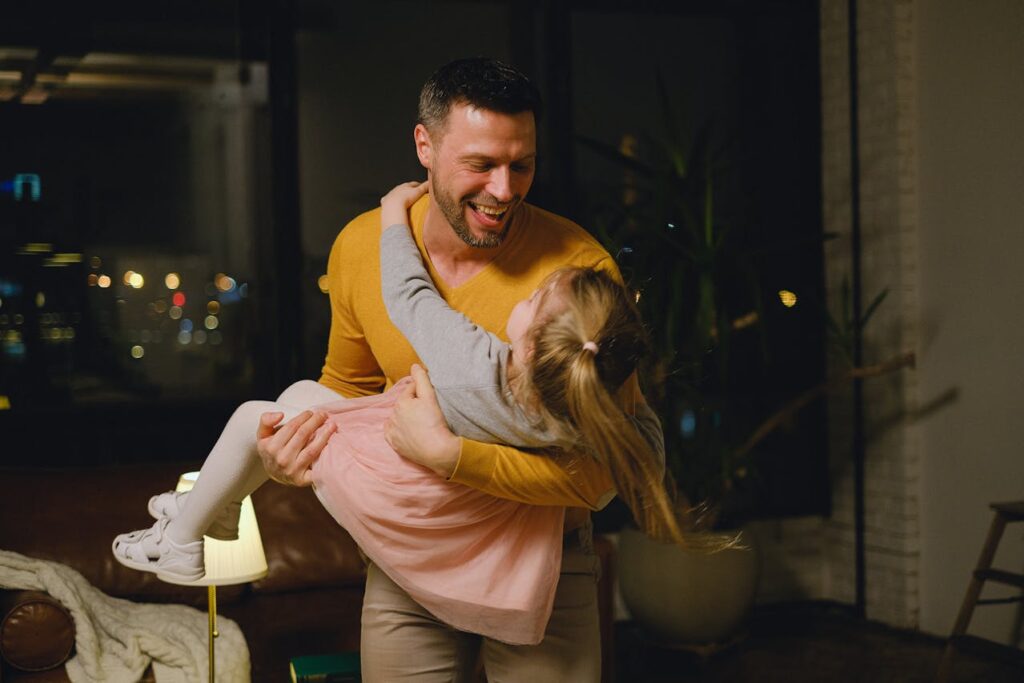When parents divorce, shared custody is not just a symbolic agreement to co-parent. It usually involves your child going back and forth between parents and homes. This poses more than a logistical challenge. Children often face serious emotional turmoil as they face constant travel and the stark differences between mom’s house and dad’s house. Fortunately, there are several ways you can make the transition easier by working together and helping your children enjoy a loving childhood supported by both parents.
Understanding the Impact of a Child Going Back and Forth Between Parents
Children need stability. A little chaos can be fun, but too many changes in custody arrangements can cause distress. A child going back and forth between parents often experiences anxiety and may feel a lack of belonging in one or both homes. There is a high potential for stress and confusion in the process. This is why it is vital for parents to work together to create consistency, communication, and smooth coordination in their children’s routines.
Emotional Effects on Children
Going between homes can take an emotional toll on children. It is common for children to experience anxiety, separation issues, and feelings of instability. This is enhanced when children are unable to predict what will happen next, what environment they will walk into, or whether their parents can be nice to each other at the next meeting. Child therapists often see these emotional effects of divorce as kids have a difficult time adapting to the logistic requirements of equal custody between divorced parents.
The Role of Routine in Split Parenting
The good news is that routine can be the balm for a child’s emotional sense of instability. When co-parents work together to create a predictable schedule and a comfortable sense of belonging in both homes, children are better able to relax and adapt. This is why synchronized schedules, routines, and shared parenting policies can be so important. Agree on a set of rules instead of different rules, adapt your different parenting styles to create a cohesive environment and make sure each living arrangement is tailored to your child’s needs.
What is Co-Parenting and Why is it Important?
Co-parenting is the process of working together as parents after the divorce. Co-parenting often involves setting shared rules and routines so that a child’s experience is consistent even when for a child going back and forth between parents. Co-parenting is essential for a child’s well-being after the divorce. Successful co-parenting can ease the stress of transition between parents by ensuring both parents are focused on the best interests of the child.
Co-Parenting vs. Parallel Parenting
Co-parenting is when divorced parents work together. Parallel parenting is when divorced parents each do their best for the child but minimize direct contact. In many situations, co-parenting is the best approach to help children feel stable and supported. However, in high-conflict situations where parents cannot safely work together or get along, parallel parenting is often the best approach.
Parallel parenting can work if both parents agree to an essential parenting plan before minimizing contact. In custody cases involving either sole custody or joint physical custody, parallel parenting can help maintain a much-needed peace between parents so the child never witnesses conflict. A good routine can make parallel parenting much easier with minimal communication—a phone call can replace face-to-face discussions.
Want to discover effective co-parenting strategies from parenting experts that can also help ensure proper child support? Read our article, ‘How to Co-Parent: 5 Simple Strategies for Success,’ to learn more!

Credit: Pexels
5 Practical Ways to Help Your Child Going Back and Forth Between Parents
If you are planning, going through, or have already completed your divorce, it’s important to consider how to ease the experience of your child going back and forth between parents. Planning ahead or easing stress that already exists, the right techniques can help create stability, a sense of belonging, and emotional security to your child.
These five methods can help your child adapt comfortably to your family’s new normal routine. A child’s life can be happy after divorce, but the relationship between parents is essential.
Tip 1 – Prioritize Open Communication Between Parents
Consistent and positive communication between co-parents can help with transitions. Key conversations will help you stay coordinated and build that routine that your child will come to rely on. Children benefit from seeing their parents speak calmly to each other during hand-offs and they benefit from the coordination that comes from working together.
Use tools like text messaging or a shared chat program to keep in touch while avoiding conflict in front of your child no matter what. If you do need to disagree, schedule your argument for a private time when your child is at school or an activity so they are fully removed from the situation.
Tip 2 – Keep Essential Items in Both Homes
Make your child feel at home in both homes with two sets of essential items.Keep two toothbrushes, two sets of pajamas, and two favorite cups at each parent’s house. It’s important not to ask your child to pack an overnight bag. This can make them feel like they are always a guest and never “at home”. For a child going back and forth between parents, they should feel like they are coming home to “their room” and “their stuff” in both homes. And, of course, you want your child to feel welcome and safe in your home.
Personal clothes, favorite toys, and even school materials can help them build across-the-board stability and a sense of belonging.
Tip 3 – Create a Transition Ritual
Transition can be an anxious time for children, but rituals can be fun and familiar. Creating a transition ritual can help a child adjust during the move from one parent’s home to another. Instead of something to worry about, make it something to look forward to. Your ritual might be sharing a favorite meal, a quiet walk in the neighborhood park together, or watching a movie with popcorn on their first night for each transition.
The ritual can vary depending on the direction the child is headed, or you might unify the ritual. You could always meet at a favorite place for pick-up and drop-off, allowing for a half-hour of fun in between (which also serves as a comfortable buffer for traffic and late arrivals).
Tip 4 – Encourage a Healthy Relationship with Both Parents
Children develop a stronger self-esteem and emotional stability when they have a good relationship with both parents. This can be achieved after a divorce by encouraging a healthy relationship in both homes. A child going back and forth between parents has a chance to spend quality time with each parent, reassured that both parents love them with equal strength in their own special ways.
Here, divorced parents must be very careful not to let unhappy feelings or distrust from the divorce influence your child’s experience. Children of divorce are frequently caught in the middle of their parents’ fights. Parents should do their best to support their child’s relationship with the other parent. Avoid negative talk and encourage connection, even if it’s hard or you can’t share their joy in this instance.
Tip 5 – Be Patient with Emotional Responses
Finally, let everyone feel their feelings. You and your child may have strong emotions during this time. Just as you are advised to be patient with yourself as you recover from the divorce, remember to be patient with your child. Children often display emotional outbursts or developmental regression after a divorce. Family separation can be a traumatizing experience.
A child going back and forth between parents needs time to adapt. Acting out is normal, especially in young children, and empathetic understanding is the best way to show your child that everyone has a right to their feelings and to work through them at their own pace. It’s OK for your child to be angry, frustrated, or frightened. If you provide stability, routine, and loving support, they will eventually adapt to the new normal.

Credit: Pexels
The Role of Technology in Co-Parenting
One of the great things about the modern age is that co-parenting is easier to coordinate than ever before. Phones, email, social media, and digital reminders can help you keep a healthy schedule and open communication. You can use technology to facilitate coordination and communication between calendars.
Share apps, calendars, messaging platforms, and keep track of extracurricular activities to ensure your child’s experience is both reliable and enriched. There are so many options that each parenting team can figure out a unique balance of tech and software to make your co-parenting process easier. Don’t forget to loop in your children. The tech-savvy youth often have a line on the latest-and-best apps for everything these days, and older children benefit greatly from helping to plan their experience as a child going back and forth between parents.
Mistakes to Avoid When a Child is Going Back and Forth Between Parents
When talking about co-parenting, it is -of course – also important to discuss mistakes to avoid. Divorce comes with many opportunities to lose track of parenting best-practices in the midst of chaos and strong emotions. Mistakes like arguing in front of the children, using children as messengers, or bad-mouthing the other parent can be damaging to a child going back and forth between parents, but many fall into these common follies in the throes of their own post-divorce emotional distress. It’s important to protect your child’s mental health, whether they are young, in high school, or even adults.
By maintaining your awareness of these chances to misstep, you can more easily avoid mistakes that the parenting community has already learned from.
Failing to Maintain Consistency
Post-divorce can feel like chaos, but children need consistency. This is true for each individual parent and in the routine you build together. It is important to maintain consistent rules, routines, and values in both homes. Inconsistent parenting can lead to a variety of behavioral and emotional problems for children including:
- Poor sense of consequences;
- Sleep problems;
- New phobias;
- Developing two personas;
- Anxiety about one or both homes;
- Feeling unsafe and unsecure.
Ignoring the Child’s Emotional Needs
The logistics of co-parenting can be distracting, but remember to listen to your child and pay attention to their emotions. Divorce is an important time to create a relationship of open communication with your child. Open up about some of your post-divorce feelings and invite them to share if they feel scared, angry, anxious, or even hopeful. Welcome their feedback and do your best to listen to your child’s concerns. This can not only help you head off serious childhood worries, it can also help your child feel more in control of their life changes.

Credit: Pexels
When to Seek Professional Help for a Child Struggling with Transitions
Many families navigate the post-divorce transition period with reasonable success. Adapting to the new routine is normal if children are given stability and belonging in both homes. However, some children have a harder time than others with the initial transition and with transitions between homes.
A child going back and forth between parents who throws a tantrum, has an anxiety attack, or showing other red flags that they are having a hard time coping with transitions can benefit from the support of a professional child therapist, counselor, or psychologist. Therapy can support children struggling emotionally by giving them a chance to express their emotions outside the context of parents and divorce.
Different types of child therapy include:
- Talk therapy;
- Art therapy;
- Play therapy;
- Family therapy;
- Cognitive behavior therapy;
- Group therapy;
- Animal therapy.
Conclusion
If you have a child going back and forth between parents after a divorce, it’s important to make sure they feel safe, stable, and welcome in both homes. Work together with your ex on a co-parenting plan that can help your child come to enjoy the transitions, feel happy in each home, and develop a stable overall childhood experience. Collaboration between parents is key.
Remember to maintain your patience and keep a continuous line of communication open between both your co-parent and your child. These steps can help ease the transition for a child going back and forth between parents until they are happy and relaxed in either home and even helping you keep to their new-normal schedule.
By creating a stable and loving routine, any child can learn to enjoy living between parental homes, minimize the emotional impact of divorce, and gain valuable skills of adaptiveness to carry into adulthood.
Ready to enhance your parenting skills and make the most of your parenting time? Enroll in our online parenting class today to gain valuable insights on child custody, family law, and strategies that can transform your family dynamics! Also, Sophie, our AI parenting assistant, is here to respond to all your parenting questions and provide you with another point of view.
References
Buccheri, T., Musaad, S., Kelly K. Bost, K., Fiese, B. (2018). Development and assessment of stressful life events subscales – A preliminary analysis. Journal of Affective Disorders. 226. 178-187. 10.1016/j.jad.2017.09.046
Kalmijn, M., & De Graaf, P.M. (2012). Life course changes of children and well-being of parents. Journal of Marriage and Family, 74(2), 269–280. https://doi.org/10.1111/j.1741-3737.2012.00961.x









